I. Introduction
Packaging materials not only influence how goods are stored, transported and highlighted but also shed light on the environmental impact of any specific item. Stretch wrap and shrink wrap are two popular materials which the manufacturers use to secure, protect and safe keeping of products. In this..READ MORE. it will give you more detail about the chemical composition, characteristics how they can be applied and which industries those type of wraps are suitable for?

II. Material Composition
A. Stretch Wrap
Stretch wrap (cling film or stretch film) is often made from Linear low-density polyethylenes. The choice of wrap width depends on the elongation (stretchiness) you need to be able to stretch it around a load and have some residual tension. The unique feature of LLDPE is that it allows for a balance between the strength, flexibility and self-adhesion necessary to hold contents together safely.
B. Shrink Wrap
Whereas, shrink wrap is often made from polyethylene (PE), polyvinyl chloride (PVC) and polystyrene(PS). Although they exhibit less elasticity than LLDPE, these materials shrink when heated and effectively match the shape of the products that they contain. Due to its conformability and tamper-evidence, shrink wrap is favored form of product packaging for some goods.
III. Application Process
A. Stretch Wrap
Stretch wrap can be applied by hand or with a wrapping machine, wrapping the film around a pallet or product. Since the film is elastic,it can be corved & sealed by stretching and sticking material together simply. This process can be automated and enhanced using stretch wrap equipment; robopac rotary arm wrappers, turntables.
B. Shrink Wrap
The product is put on a flat device, film covers it and after applying heat the shrinking of film to make stronger package. This is often accomplished with a heat gun or over shrink tunnel/ chamber machines. The film shrinks and adheres to the product by means of heat, forming a custom-fit cover.
IV. Key Characteristics
A. Stretch Wrap
Stretch wrap is elastic — meaning it can be stretched and holds products in place without heat;self-adhesion.
Clarity and Puncture Resistance: Quality stretch wrap is clear for product identification, while it also resists punctures.
B. Shrink Wrap
Shrinkage When Heat is Applied: The most iconic feature of shrink wrap film, it shrinks tight to conform around objects completely custom.
Fit and Tamper-Evident: The film conforms tightly over the product, which mean that it does not stand any chances of being replaced without having to be discovered.
V. Usage and Industries
A. Stretch Wrap
Because of its ease of application and load stability, stretch wrap is employed in logistics, warehousing etc. Pallet stretch film is perfect for unitizing large numbers of items on pallets and securing loads during transport.
B. Shrink Wrap
Typically, shrink wrap is used for irregular shaped items like large machinery or bundled items that are not in boxes. Because it provides an airtight seal, cling film is widely used in the food and drink industry as well we retail to package up smaller-medium sized items.
VI. Environmental Impact
A. Stretch Wrap
And of course, plastic stretch wraps are recyclable and many manufacturers rolling out films made from recycled materials. The problem is, of course, though that while kraft paper straws are eco-friendly in production), from a disposal perspective being single-use and the same potential plastic waste implications.
B. Shrink Wrap
Some shrink wrap, such as that made of particular materials can similarly be recycled. In fact, one polymer in particular—PVC—is toxic when burned and is a culprit of not only non-biodegradable waste but also some dangerous byproducts. Nonetheless, PE and PS are more sustainable options.
VII. Cost Considerations
A. Stretch Wrap
Stretch wrap is normally purchased based on the plastic material, thickness and width of the roll. Because it can clothe vast areas with fewer parts compared to shrink wrap, this material is avowedly cost-effective.
B. Shrink Wrap
It might be a bit costlier upfront since the materials are used and you have to apply heat. But it can be cheaper for some uses that need a perfect fit and tamper-proofing.
VIII. Advantages and Disadvantages
A. Stretch Wrap
Pros: Can be strung and cost-effective Cons it needs to be thrown out in some cases, not reusable, poor enclosure for wrapped items.
Cons: Susceptible to wind and weather if not put in place correctly, won't create as tight a bond as shrink wrap.
B. Shrink Wrap
Pros: Custom fit, tamper evident if used with the ring Pull Lid, clear option for product presentation.
Cons: It needs heat to apply so it will add a level of complexity and cost in the process, not suitable for large or irregular shaped pallets.
IX. Is there a specialized form that has appeared in this game, and some innovation?
A. Specialty Stretch Films
There are several unique stretch films available in the market like pre-stretched film for more load-holding capacity and colored film to increase visibility with UV protection.
B. Specialty Shrink Films
Advancements in shrink wrap consist of PVC movies for hvac uses, high-grade diminish films as well as variety specialized reduce video clips who have higher decrease together with storage preservation.
X. Conclusion
In a world where CPET is perfect for microwaving frozen meals and PP can handle anything freezer-related, knowing what divides stretch wrap from shrink wrap helps you make the right packaging selection. Both types of coverings offer protection and security, but their difference on characteristics applications and environmental footprint should be some consideration. In the current changing world of packaging, one can hope that with new materials and technologies in place these packing solutions will become more competent and sustainable.

